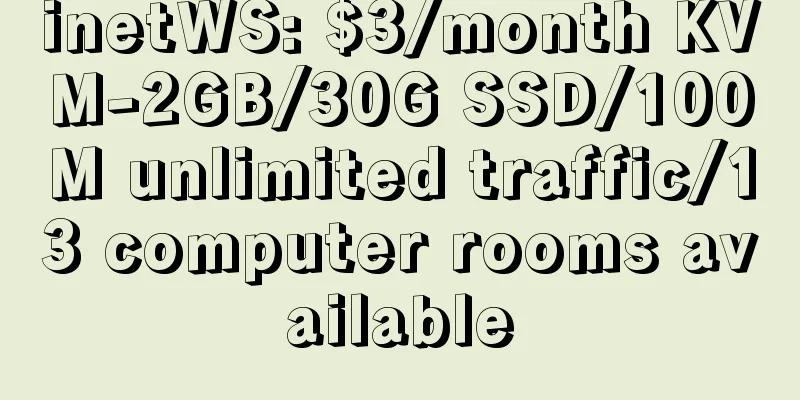How to distinguish network cables? Eight steps to teach you how to choose network cables

|
Many people don't know how to distinguish network cables. From the appearance, each network cable is similar. How can you tell which product you bought is right? In fact, network cables are divided into four iron and four aluminum wires, and all-copper network cables! Therefore, it is very important to distinguish whether the network cable we bought is all copper or iron-aluminum. Here I will teach you how to distinguish network cables. How to distinguish network cables? 1. First cut open the outer layer of the sheath, remove the insulation, and then cut a small section of the conductor to observe whether the copper color of the cross section is uniform. If it is pure copper, it will be a uniform golden color; but if it is mixed with iron or aluminum, or other alloys, obvious white spots or black can be seen. 2. When the surface of the conductor copper is burned with a positive fire, the outer color will turn black while the inner color will remain unchanged yellow. After wiping off the burned black part, the copper will still retain its original color; but if it contains iron, it will be a dull black no matter how you rub it. 3. For the inner insulating part, you can pull out a section of it with an empty sleeve, then pinch both sides with your hands and stretch it to both sides. The longer the stretching, the better the material quality; the color itself is bright and the surface is smooth. 4. The outer sheath has different colors, which are determined by customer requirements, usually dark gray or light gray. The sheath surface color is uniform and tight, and the cross section is clearly gray and white without impurities; the material body is torn without threads, and the line is easy to pull apart when it is straight and torn downwards, which is convenient for splicing; the horizontal tearing is difficult to protect, and the two different tearing methods prove that the material is original.
Network cable selection steps 1. Packaging: Category 5e network cables are marked with CAT5E and should contain 305 meters (1000 feet) per box. Category 5 cables are marked with CAT5. If the packaging is not 305 meters per box, it may not be a network cable. Labels on the cables: Regular manufacturers' product labels have lengths marked on them, which makes it easy to identify how many meters of cable are used and how many meters are left in a box when doing projects. 2. Tested with a multimeter: The resistance of a 305-meter single-core national standard network cable is about 28 ohms, while the resistance of some fake Category 5e network cables on the market is even up to 50 ohms, shortening the transmission distance by almost half. 3. Network cable materials: Some low-quality network cables have 2 pairs of copper wires and 2 pairs of copper-clad iron wires among the 4 pairs. They are not a big problem when used in computer networks, but will cause interference when used in monitoring systems. They can be identified by using a magnet. 4. Visually: The twist density of the twisted pair should be close to 1CM. 5. Category 5e twisted pair is an unshielded twisted pair. Compared with ordinary Category 5 twisted pair, Category 5e twisted pair has less attenuation when transmitting signals and stronger anti-interference ability. In a 100M network, the interference level of user equipment is only 1/4 of that of ordinary Category 5 cables. 6. Category 5e twisted pair also uses 4 winding pairs and 1 tensile wire. The colors of the wire pairs are exactly the same as those of Category 5 twisted pair, namely white-orange, orange, white-green, green, white-blue, blue, white-brown and brown. The bare copper wire diameter is 0.51mm (wire gauge is 24AWG), the insulated wire diameter is 0.92mm, and the UTP cable diameter is 5mm. 7. Category 5e unshielded twisted pair cable is a cable that improves some of the performance of the existing Category 5 shielded twisted pair cable. Many performance parameters, such as near-end crosstalk, attenuation-to-crosstalk ratio, and return loss, have been improved, but its transmission bandwidth is still 100MHz. 8. Unshielded twisted pair cable is composed of multiple pairs of twisted wires and a plastic sheath. Category 5 refers to the five different quality levels defined by the International Electrical Industry Association for twisted pair cables. |
<<: Why ICO made a mistake and blockchain will still lead the era
>>: What is AWG? Why is AWG an important parameter when choosing cables?
Recommend
Fiber Polarity and Its Role in Switching Technology
Before we delve into the world of switching techn...
Huawei releases "Premium Private Line 2.0 & Intelligent Distributed Access" solution
[Beijing, China, October 15] In September this ye...
F5 Cloud Native Keywords: Transformation, Construction, Integration
[51CTO.com original article] Cloud native is one ...
Inventory | 7 major acquisitions in the cybersecurity field recently
Cybersecurity is more important today than ever b...
Three ways hotel Wi-Fi supports remote work
Residents are excited about and choosing to live ...
It's no big deal for the three major operators to withdraw from the US
After several twists and turns, China's three...
With a downlink rate of over 100Mbps, can Starlink really replace 5G?
According to Mobile World Live, Ookla's lates...
What? You need to change your SIM card to use 5G?!
Since 5G was officially put into commercial use l...
Small gateways and big integration - Tsinghua Unigroup's H3C ICT converged gateway leads the intelligent transformation
The introduction of the new infrastructure strate...
Hosteons: $2/month-1GB/15GB SSD/2TB@10Gbps bandwidth/Salt Lake City data center
A few days ago, I shared the promotion informatio...
Investing in Bitcoin is risky; Yashan shuts down and billions of yuan of investment goes down the drain
[51CTO.com original article] Bitcoin, as a "...
In-depth analysis of the seven major communication protocols of IOT
In the Internet of Things protocol, it is general...
Ministry of Industry and Information Technology: Improve 5G service quality and strictly adhere to four marketing red lines
[[380517]] On February 3, the Ministry of Industr...
The 18th China Enterprise Annual Selection List in 2023 was announced: Haowang AI Ultra-Low Light 3.0 Series won the 2023 China IT Industry Digital Infrastructure Excellent Product Award
In November 2023, the "China Enterprise &quo...
How do packets and routing tables forward data in the network? Learn in one minute
1. Routing Table When the frame reaches the route...









